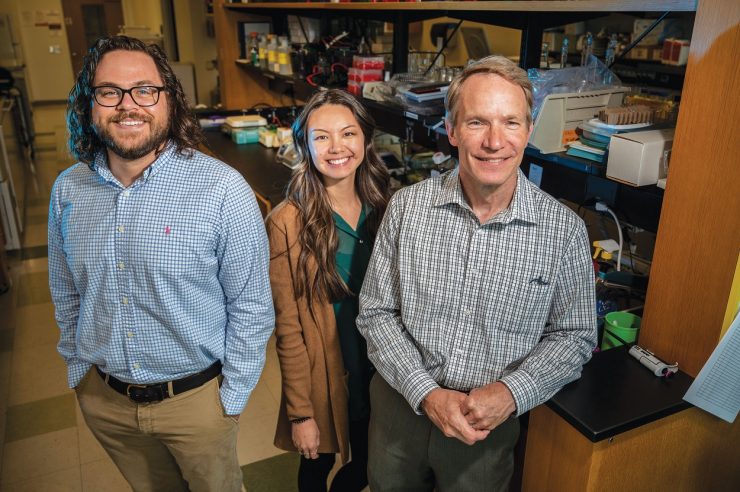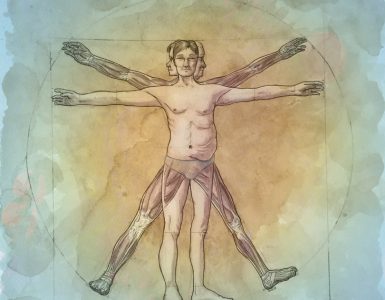KIDNEY RISK
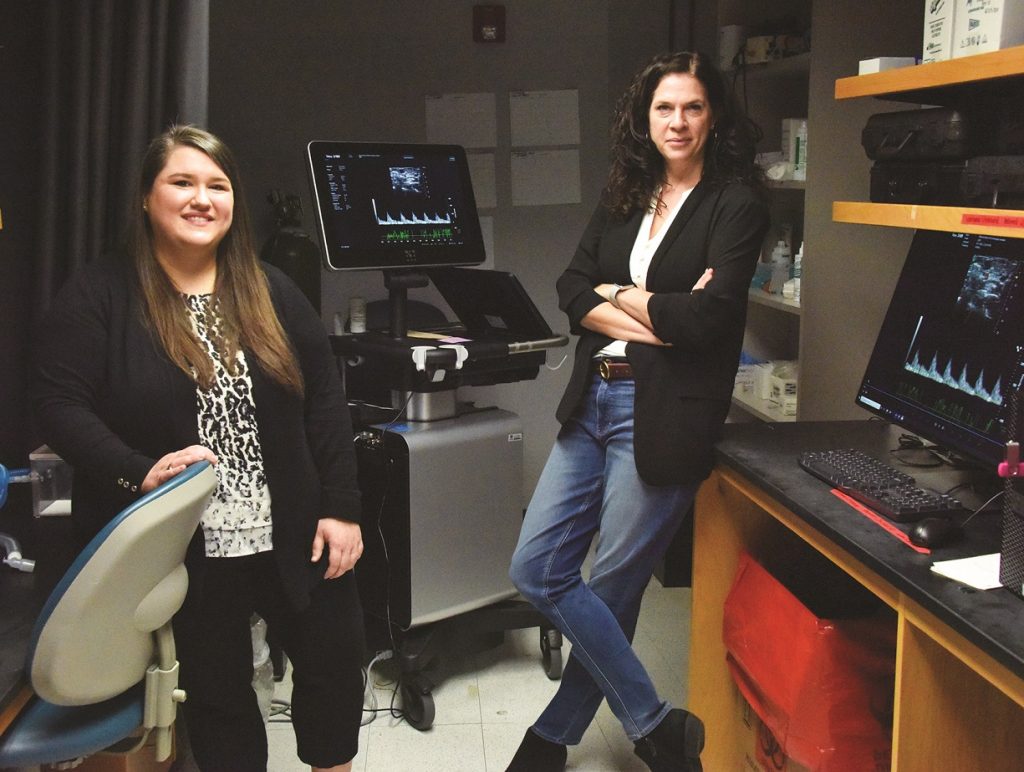
Young pregnant women, who appear to have fully recovered from an acute injury that reduced their kidney function, have higher rates of significant problems like preeclampsia and low-birthweight babies, problems which indicate their kidneys have not actually fully recovered.
Now MCG scientists have developed a rodent model that is enabling studies to better understand, identify and ideally avoid this recently identified association, they report in the Journal of the American Society of Nephrology.
“We are talking about a population of young women that we usually think about as protected and healthy, and they are not if they have had a kidney insult,” says Dr. Jennifer C. Sullivan, pharmacologist and physiologist in the Department of Physiology and interim dean of The Graduate School at Augusta University.
Acute kidney injuries, or AKIs, result from the rapid, temporary loss of adequate oxygen-rich blood to the organ that constantly filters our blood of toxins and resorbs essentials like water, glucose and potassium. An AKI can result from a literal blow to the kidney, like a car accident, from pharmaceuticals like the chemotherapy drug cisplatin, or from a major surgery or sickness that puts you in intensive care, like COVID-19, which is known to have a direct effect on the kidney.
The incidence of AKI has been on the increase, and the COVID pandemic very likely will accelerate that, says Dr. Ellen E. Gillis, senior postdoctoral fellow in Sullivan’s lab and the study’s corresponding author. A COVID-related AKI is associated with high mortality and considered an independent risk factor for death in patients with COVID.
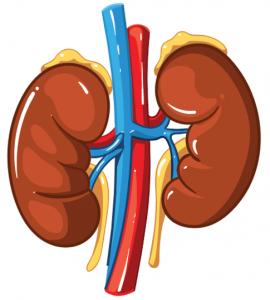 Their new model is helping identify how calamity can occur when the two conditions collide, even if they are separated by years.
Their new model is helping identify how calamity can occur when the two conditions collide, even if they are separated by years.
During pregnancy, maternal circulation must support fetal circulation so cardiac output increases, total body volume increases as well as plasma volume so the kidneys have an increased load to filter, Gillis says. “There is an increase in plasma volume to ensure the high metabolic demands of both baby and mother are met,” Sullivan adds. In this scenario, the baby actually gets preferential protection.
Two recent clinical studies and their new model suggest that even years later, some young women have lingering damage that can prevent these usual responses and protections. It can happen despite the fact that the mother’s kidney function appeared normal before pregnancy, including normal creatinine levels, a waste product that healthy kidneys filter from your blood that is measured in the blood and/or urine as a standard assessment of kidney function.
Editor’s Note: It is with great sadness that we share that Dr. Gillis passed away suddenly Wednesday, June 23.
FOOD FIGHT

A plant-based diet appears to afford significant protection to rats bred to become hypertensive on a high salt diet. When the rats become pregnant, the whole grain diet also protects the mothers and their offspring from deadly preeclampsia.
Although we have all heard to avoid the salt shaker, an estimated 30-50% of us have a significant increase in blood pressure in response to high-salt intake, percentages that are even higher and more impactful in Blacks.
Two new studies provide more evidence that the gut microbiota, which contains trillions of microorganisms that help us digest food and plays a key role in regulating the response of our immune system, is also a player in the unhealthy response to salt, investigators at the Medical College of Georgia and Medical College of Wisconsin report in the journals ACTA PHYSIOLOGICA and Pregnancy Hypertension: An International Journal of Women’s Cardiovascular Health.
The findings provide more evidence of the “potential power” of nutritional intervention, and consequently our long-term health, says Dr. David L. Mattson, chair of the MCG Department of Physiology, Georgia Research Alliance Eminent Scholar in Hypertension and senior author on the two studies.
They result from the unexpected observation that the protection works even in a well-established model of salt-sensitive hypertension: The Dahl salt-sensitive rat, which is bred to develop hypertension and progressive kidney disease on a high-salt diet.
In 2001, the Medical College of Wisconsin in Milwaukee shared their colony of Dahl SS rats, who were fed a milk-based protein diet, with Charles Rivers Laboratories. Once the rats arrived there, they were switched to a grain-based diet. Both diets are relatively low in sodium, although the protein, or casein-based, diet actually has a little less salt.
It was soon noted that when high-salt content was added to their diet, the relocated rodents developed significantly less high blood pressure and related kidney damage than the rat colonies that
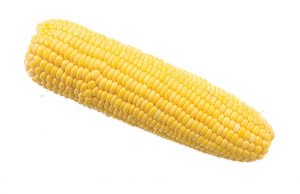
remained in Wisconsin. More than a decade of research documented these differences, Mattson and his colleagues at MCG and MCW write, and now has shown them that developing salt-sensitive hypertension isn’t just about sodium consumption.
“The animal protein amplified the effects of the salt,” says Mattson, a longtime hypertension researcher, who along with Dr. Justine M. Abais-Battad, physiologist, and postdoc Dr. John Henry Dasinger, came to MCG from Wisconsin two summers ago.
“Since the gut microbiota has been implicated in chronic diseases like hypertension, we hypothesized that dietary alterations shift the microbiota to mediate the development of salt-sensitive hypertension and renal disease,” they write in the journal ACTA PHYSIOLOGICA.
The gut microbiome is designed to metabolize what we eat, break it down and put it in a form that gives us nutrition, first author Abais- Battad says, and reciprocally it reflects what we eat.
When they looked at the microbiome in the rats: “Sure enough, they were different,” she says.
They sequenced the genetic material of both rat colonies and found they were “virtually identical,” but their response to a high-salt diet was anything but, Mattson says.
As they anticipated at this juncture, the Wisconsin rats developed renal damage and inflammation — both indicators of high blood pressure — but on the same high salt diet, the Charles River rats experienced significantly less of these unhealthy results. The distinct differences they saw in their microbiota, reflected the difference in disease incidence and severity.
There also is evidence that even on a low-salt diet, Dahl salt sensitive rats are inclined to develop preeclampsia, a potentially lethal problem during pregnancy where the mother’s blood pressure, which typically was normal before, soars and organs like the kidneys and liver show signs of damage.
 To look at the impact of diet in this scenario, the Dahl SS rats were kept on their respective plant- or animal-based protein diet and both groups had three separate pregnancies and deliveries.
To look at the impact of diet in this scenario, the Dahl SS rats were kept on their respective plant- or animal-based protein diet and both groups had three separate pregnancies and deliveries.
Rats on the whole wheat based-chow were protected from preeclampsia while about half of the rats on the animal-based casein diet developed this significant complication of pregnancy. They experienced a significant increase in the protein spilled into their urine, an indicator of kidney trouble, which worsened with each pregnancy; increased inflammation, a driver of high blood pressure; increased pressure inside the renal artery; and showed significant signs of kidney destruction when the organs were studied on follow up. They died of problems like stroke, kidney disease and other cardiovascular problems.
The work Abais-Battad, Dasinger and Mattson already have done shows that the protein-based diet produces more proinflammatory molecules, where the plant-based diet seems to suppress these factors.
They are further exploring the impact of diet of the renin-angiotensin system, which helps regulate blood pressure. They also want to better dissect the blood pressure-raising bacteria and the factors they produce.
SALT SENSITIVE
Obesity and a high-salt diet are both bad for our hearts but they are bigger, seemingly synergistic risks for females, scientists report.
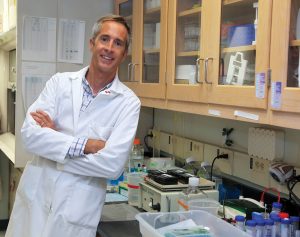
“We see younger and younger women having cardiovascular disease and the question is: What is the cause?” says Dr. Eric Belin de Chantemele, physiologist in the MCG Vascular Biology Center and Department of Medicine. “We think the fact that females are more salt His message to women based on the sex differences they are finding: “First reduce your consumption of salt, a message the American Heart Association has been pushing for years, which should also result in a reduction in your intake of highly processed, high-calorie food and drink.”
Belin de Chantemele, whose research team has been exploring why so many young women are now getting cardiovascular disease, presented their findings during the Henry Pickering Bowditch Award Lectureship at the American Physiological Society Annual Meeting at Experimental Biology 2021. The award, which honors the scientist who created the first physiology lab in the country and was the American Physiological Society’s first president, recognizes original and outstanding accomplishments in the field of physiology by a young investigator.
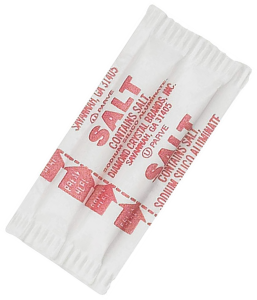 The sex hormone estrogen, which has some protective powers like keeping blood vessels more flexible, is considered a natural protection for premenopausal women yet, along with soaring rates of severe obesity in young women, heart disease is now the third leading cause of death in females between the ages 20-44 — fourth for males in that age group — then moves up to second place for the next 20 years in both sexes, and is the number one killer for both men and women looking at all ages, according to the National Vital Statistics Reports.
The sex hormone estrogen, which has some protective powers like keeping blood vessels more flexible, is considered a natural protection for premenopausal women yet, along with soaring rates of severe obesity in young women, heart disease is now the third leading cause of death in females between the ages 20-44 — fourth for males in that age group — then moves up to second place for the next 20 years in both sexes, and is the number one killer for both men and women looking at all ages, according to the National Vital Statistics Reports.
While Belin de Chantemele refers to bad nutrition as the “world’s biggest killer” and obesity as a major risk factor for hypertension in both sexes, his lab has mounting evidence that obesity and high salt intake are even bigger risks for females, who have naturally higher levels of two additional hormones, leptin and aldosterone, setting the stage for the potentially deadly cardiovascular disparities.
NEW SURGERY CHAIR

Dr. Caprice C. Greenberg, a renowned health services researcher and surgical oncologist, is the new chair of the MCG Department of Surgery. She also is the Moretz/Mansberger Distinguished Chair in Surgery.
Greenberg, who previously served as the Morgridge Distinguished Chair in Health Services Research in the Department of Surgery at the University of Wisconsin School of Medicine and Public Health in Madison, joined the medical school last spring.
Her career focus has been using research to improve the quality and safety of surgical care. She has been at the forefront of the push to move surgical investigation, including video capture and analysis, into operating rooms to study the way care is delivered and to focus on system, team and individual provider performance.
Greenberg created the Wisconsin Surgical Outcomes Research Program (WiSOR), a multi-investigator research program she directed until 2019. WiSOR was developed in 2011 to improve the quality, safety, effectiveness and efficiency of surgical care through research and innovation.
It is an effort she intends to replicate at MCG and across Georgia.
PRIME TECHNOLOGY
The latest gene editing technology, prime editing, expands the “genetic toolbox” for more precisely creating disease models and correcting genetic problems, scientists say.
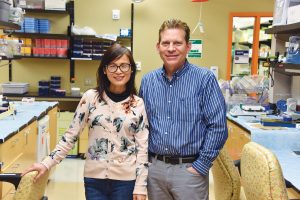
In only the second published study of prime editing’s use in a mouse model, MCG scientists report prime editing and traditional CRISPR both successfully shut down a gene involved in the differentiation of smooth muscle cells, which help give strength and movement to organs and blood vessels.
However, prime editing snips only a single strand of the double-stranded DNA. CRISPR makes double-strand cuts, which can be lethal to cells, and produces unintended edits at both the work site as well as randomly across the genome, says Dr. Joseph Miano, genome editor, molecular biologist and J. Harold Harrison, MD, Distinguished University Chair in Vascular Biology at the MCG Vascular Biology Center.
 Prime editing is the latest gene editing technology, and the MCG scientists report in the journal Genome Biology that they were able to use it to remove expression of a gene in smooth muscle tissue, illustrating prime editing’s ability to create cell-specific knockout mice without extensive breeding efforts that may not result in an exact model, says Dr. Xiaochun Long, molecular biologist in the Vascular Biology Center. Miano and Long are corresponding authors of the study.
Prime editing is the latest gene editing technology, and the MCG scientists report in the journal Genome Biology that they were able to use it to remove expression of a gene in smooth muscle tissue, illustrating prime editing’s ability to create cell-specific knockout mice without extensive breeding efforts that may not result in an exact model, says Dr. Xiaochun Long, molecular biologist in the Vascular Biology Center. Miano and Long are corresponding authors of the study.
“It’s actually less complicated and more precise than traditional CRISPR,” Miano says of prime editing, which literally has fewer components than the game-changing gene-editing tool CRISPR.
Miano was among the first wave of scientists to use CRISPR to alter the mouse genome in 2013. Two scientists were awarded the 2020 Nobel Prize in Chemistry for the now decade old CRISPR, which enabled rapid development of animal models, as well as the potential to cure genetic diseases like sickle cell, and potentially reduce the destruction caused by diseases like cancer, in which environmental and genetic factors are both at play.
CBD VERSUS ALZHEIMER’S
A two-week course of high doses of CBD helps restore the function of two proteins key to reducing the accumulation of beta-amyloid plaque, a hallmark of Alzheimer’s disease, and improves cognition in an experimental model of early onset familial Alzheimer’s, investigators report.
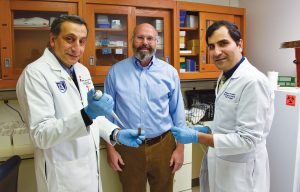
The proteins TREM2 and IL-33 are important to the ability of the brain’s immune cells to literally consume dead cells and other debris like the beta-amyloid plaque that piles up in patients’ brains, and levels of both are decreased in Alzheimer’s.
The investigators report for the first time that CBD normalizes levels and function, improving cognition as it also reduces levels of the immune protein IL-6, which is associated with the high
inflammation levels found in Alzheimer’s, says Dr. Babak Baban, immunologist and associate dean for research in the Dental College of Georgia and the study’s corresponding author.
There is a dire need for novel therapies to improve outcomes for patients with this condition, which is considered one of the fastest growing health threats in the United States, DCG and MCG investigators write in the Journal of Alzheimer’s Disease.
“Right now we have two classes of drugs to treat Alzheimer’s,” says Dr. John Morgan, neurologist and director of the Movement and Memory Disorder Programs in the MCG Department of Neurology. One class increases levels of the neurotransmitter acetylcholine, which also are decreased in Alzheimer’s, and another works through the NMDA receptors involved in communication between neurons and important to memory. “But we have nothing that gets to the pathophysiology of the disease,” says Morgan, a study coauthor.
The DCG and MCG investigators decided to look at CBD’s ability to address some of the key brain systems that go awry in Alzheimer’s.

They found CBD appears to normalize levels of IL-33, a protein whose highest expression in humans is normally in the brain, where it helps sound the alarm that there is an invader like the beta-amyloid accumulation. There is emerging evidence of its role as a regulatory protein as well, whose function of either turning up or down the immune response depends on the environment, Baban says. In Alzheimer’s, that includes turning down inflammation and trying to restore balance to the immune system, he says.
That up and down expression in health and disease could make IL-33 both a good biomarker and treatment target for disease, the investigators say.
CBD also improved expression of triggering receptor expressed on myeloid cells 2, or TREM2, which is found on the cell surface where it combines with another protein to transmit signals that activate cells, including immune cells. In the brain, its expression is on the microglial cells, a special population of immune cells found only in the brain where they are key to eliminating invaders like a virus and irrevocably damaged neurons.
THE GRAVITY OF THE SITUATION
 Extended time in space weakens astronauts’ bones, so scientists are working to better understand how bone senses and responds to the usual forces placed upon it with the goal of keeping their bones strong.
Extended time in space weakens astronauts’ bones, so scientists are working to better understand how bone senses and responds to the usual forces placed upon it with the goal of keeping their bones strong.
The skeleton’s ability to adapt to mechanical loading — the forces put on bone by both gravity and muscle in response to movement— is critical to bone health, and circumstances like spaceflight or a spinal cord injury can interfere, says Dr. Meghan E. McGee-Lawrence, biomedical engineer in the MCG Department of Cellular Biology and Anatomy.
McGee-Lawrence received a $750,000 grant from NASA to help her better understand how lack of gravity and other causes of disuse affect the usual dynamics of the skeleton,
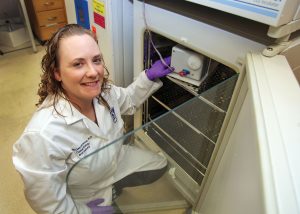
and ways to restore a healthy dynamic when usual options like increased physical activity and weight lifting are not viable.
Her focus is the natural sensors of mechanical loading on the bone called osteocytes. They are the most common cell in the bone, and McGee- Lawrence’s lab was the first to report that tears, called plasma membrane disruptions, occur in osteocytes with mechanical loading, and that, when all goes well, the result is healed tears and building bone.
They have shown that plasma membrane disruptions happen in healthy osteocytes in under a minute in response to load and immediately initiate changes like letting in more calcium, which in turn alters expression of molecules that regulate the activity of bone-forming osteoblasts and bone-consuming osteoclasts.
Calcium found in abundance in the extracellular fluid around osteocytes rushes through the new opening where the mineral, best known for building strong bones and teeth, instead functions as a call to action for these cells.
When there are few tears and little mechanical loading, the message to osteoblasts is that denser bone is not needed and the osteoclasts will resorb some of the bone matrix. Conversely, when osteocytes sense a lot of loading and tearing, they will instruct osteoblasts to shore up bone density and osteoclasts to cut back on resorption.
Now, they are looking directly at what happens to plasma membrane disruption formation and repair in osteocytes in response to disuse. They also are looking for ways to normalize this apparently essential process in maintaining healthy bone in the face of disuse that occurs in space as well as on Earth.

